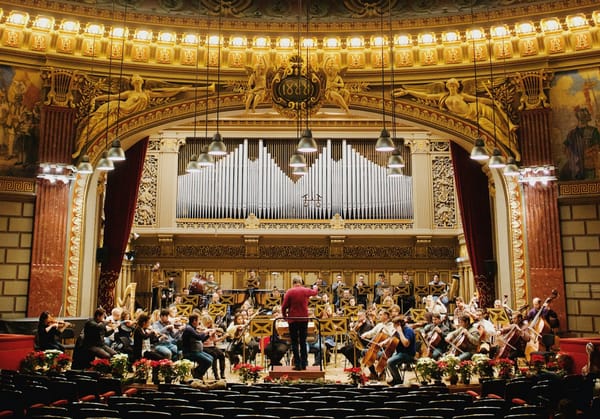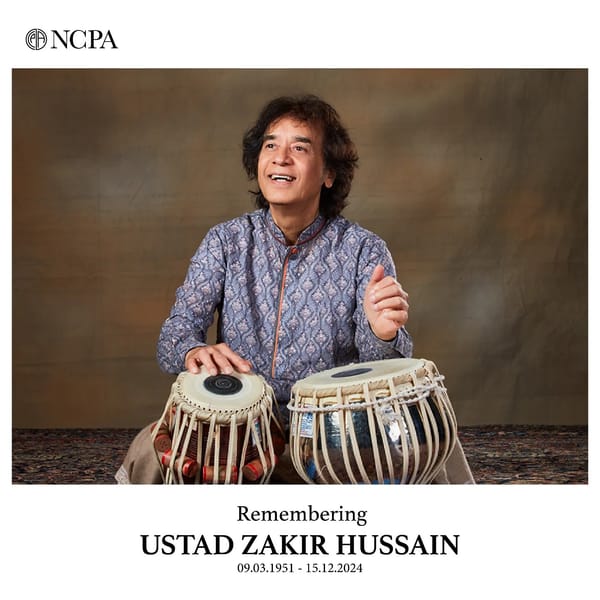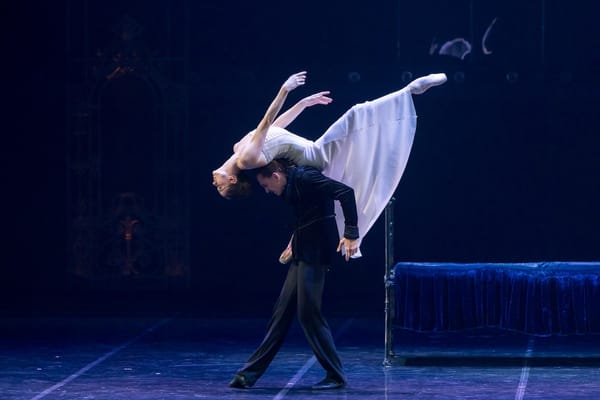Beyond Technique: The Importance of Musicality and Expression in Auditions
Technical proficiency is essential in auditions, but true artistry lies in musicality and expression. This article explores how interpretation, phrasing, and emotional depth captivate audition panels, setting exceptional performers apart from those who simply play the notes.

Auditions are often viewed as high-stakes tests of technical mastery, where candidates strive for perfection in intonation, articulation, and precision. While technical proficiency is undeniably crucial, it is musicality and expression that ultimately distinguish a remarkable performance from a merely competent one. The ability to convey emotion, shape phrases meaningfully, and demonstrate a deep connection to the music is what captivates audition panels and makes a lasting impression. This article explores why musicality matters just as much—if not more—than technique, and how performers can refine their interpretative skills to elevate their auditions.
Technical Excellence: A Prerequisite, Not the Goal
For any musician auditioning for a conservatoire, orchestra, or competition, a high level of technical skill is expected. Scales, arpeggios, and rapid passages must be executed flawlessly, and rhythmic accuracy must be impeccable. However, technical perfection alone rarely guarantees success in an audition. In a room full of equally proficient musicians, what makes one stand out is their ability to breathe life into the music.
Consider a violinist performing a movement from a Bach partita. While one candidate may play with flawless intonation and crisp articulation, another might use subtle variations in dynamics, phrasing, and timing to create a sense of dialogue and emotional depth. The latter will almost always leave a stronger impression, demonstrating that music is not just about precision but about storytelling and communication.
Musicality: The Heart of Artistic Expression
Musicality is often described as an innate quality, but in reality, it is a skill that can be cultivated through deliberate practice and deep engagement with the repertoire. Musicality encompasses:
- Phrasing and Shape: Understanding the natural rise and fall of a melodic line, much like the ebb and flow of speech.
- Dynamic Contrast: Using volume changes to highlight tension and release within a piece.
- Tempo Flexibility: Applying rubato tastefully to enhance expressiveness.
- Tonal Colour: Varying tone production to reflect different emotions and moods.
- Articulation and Nuance: Using accents, staccato, and legato to shape musical sentences.
When these elements are thoughtfully integrated, they transform a performance from a mechanical execution into a compelling interpretation that resonates with listeners.
The Role of Emotional Expression in Auditions
Audition panels are not just evaluating technical skills; they are searching for musicians who can move an audience. A performer who connects emotionally with a piece can create an experience that lingers in the memory of the jury.
This emotional connection can manifest in various ways:
- Authenticity: Sincerity in expression allows an audience to feel the performer’s personal connection to the music.
- Narrative Understanding: Every piece tells a story. A musician who understands the historical context and emotional subtext of a work can bring it to life.
- Engagement with the Moment: A truly captivating performance is one where the musician is fully immersed in the music, responding intuitively to its ebb and flow.
A pianist playing Chopin’s Nocturne in D-flat major, for example, may use rubato not just as a technical tool but as a means to express longing, hesitation, or tenderness. The ability to convey such emotions separates an outstanding musician from a technically proficient but uninspired one.
Common Pitfalls: Why Some Performances Fall Flat
Many musicians, particularly younger ones, fall into the trap of prioritising technique over musicality. Some common pitfalls include:
1. Playing Too Mechanically: A rigid, metronomic approach can make even the most beautiful pieces sound lifeless.
2. Ignoring Phrasing: Without thoughtful shaping of musical lines, performances can feel monotonous.
3. Overuse of Dynamics and Rubato: While expression is vital, excessive or unnatural fluctuations in tempo and dynamics can come across as artificial.
4. Lack of Connection to the Music: Simply playing the notes without emotional engagement can leave the panel feeling uninspired.
Developing Musicality: Practical Strategies
If musicality and expression are the keys to a successful audition, how can musicians develop these qualities? Here are some effective strategies:
- Sing the Melody
Singing a passage, even for instrumentalists, helps internalise phrasing and natural breath control. It forces the musician to think about where phrases should rise and fall, leading to more organic interpretations.
- Analyse the Score Beyond Notes
Understanding the harmonic structure, historical context, and composer’s intent can provide insight into phrasing and expression. Reading about a composer’s life or the circumstances surrounding a piece’s creation can add depth to an interpretation.
- Record and Listen Critically
Self-recording is an invaluable tool for assessing musicality. Listening back allows musicians to evaluate phrasing, dynamics, and emotional depth objectively, identifying areas that may need more nuance or contrast.
- Experiment with Interpretative Choices
Rather than settling on a single interpretation, musicians should explore different ways of shaping phrases, altering dynamics, and varying articulations. Playing the same passage with multiple emotional intentions can reveal new expressive possibilities.
- Study Great Performers
Listening to legendary musicians such as Maria Callas, Jascha Heifetz, or Vladimir Horowitz can provide invaluable lessons in expressiveness. Observing how they shape phrases, use silence, and engage with their music can inspire new approaches.
- Work with a Coach or Mentor
Receiving feedback from an experienced musician can help refine interpretative choices. A mentor can highlight areas where more expression is needed and offer guidance on achieving a deeper emotional connection with the music.
Audition Panels: What They Listen For
Understanding what an audition panel values can help musicians tailor their performances effectively. While different panels may have varying preferences, they typically seek:
- A balance between technique and musicality – A performance should be both polished and expressive.
- Confidence and stage presence – Engaging with the music and audience demonstrates professionalism.
- Originality and depth of interpretation – Playing a piece with insight and personal touch makes an impact.
- Consistency and reliability – Expressiveness should not come at the cost of accuracy.
Panels are often drawn to musicians who take considered artistic risks rather than those who play it safe but lack emotional engagement.
Final Thoughts: Expression as the Defining Factor
While technical mastery is a prerequisite for success in auditions, it is musicality and emotional depth that truly make a performer stand out. An audition is not just about proving one’s ability to execute notes perfectly—it is an opportunity to communicate, tell a story, and leave a lasting impression.
Aspiring musicians should strive to move beyond technique and embrace the expressive possibilities of their instrument. By cultivating phrasing, dynamic contrast, and emotional connection, they can transform their performances into something unforgettable—captivating audiences and audition panels alike.





